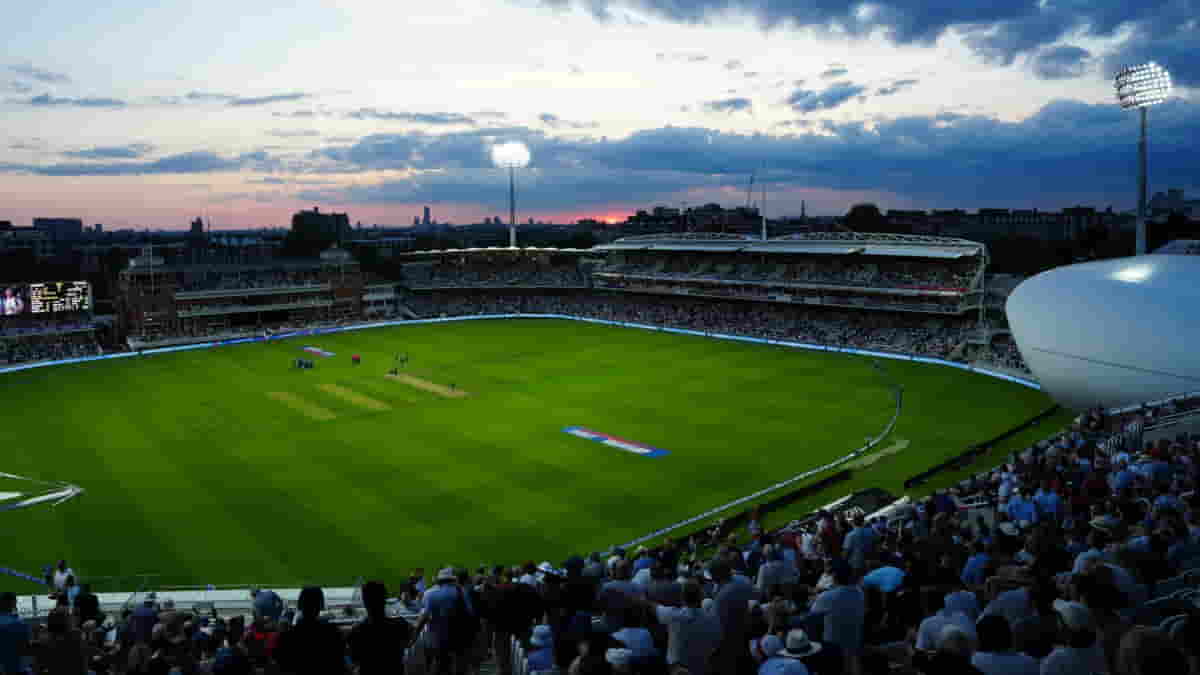
The slope at Lord’s is among the most unique and discussed features of international cricket. Although Lord’s is universally respected for its history and tradition, this natural slope is its unique feature, which makes it special
As India and England gear up to face each other in the third Test, the focus once again is on this 2.5-meter slope at Lord’s, an element that affects the way the game is played at the London classic subtly but importantly.
What Makes the Slope at Lord’s So Unique?

In contrast to the usual cricket grounds, which are constructed on flat grounds, the incline at Lord’s is diagonal from the Pavilion End (northwest) to the Nursery End (southeast). The differential in altitude stands at around 2.5 meters (8 feet 2 inches), a discernible gradient that affects bowlers and batters alike.
This gradient has been part of the terrain since it was constructed at St John’s Wood in 1814. Despite several overhauls over the years, Lord’s slope has remained intact, partly because the intricacies of leveling it and the ground’s long-held tradition proved to be formidable obstacles.
Historical Perspective: Angus Fraser on the Lord’s Slope
A former England quick bowler, Angus Fraser, who played widely at Lord’s for Middlesex, framed the slope at Lord’s as a part of the ground itself.
“If you were building a cricket ground from new, you wouldn’t put a slope like this in,” Fraser said to The Athletic. “But the land just rolls off Hampstead Heath, the top of London, down to the River Thames naturally. It’s something that’s existed for thousands of years.”
He pointed out that although a few English grounds, such as Headingley and Trent Bridge, have gentle slopes or downhill inclines, none compare with the uniform cross-field gradient at Lord’s.
The Impact of Slope at Lord’s on Bowlers
The slope at Lord’s is a strategic advantage, especially for bowlers. Based on the end they bowl from, they can employ the gradient to control movement in the air or off the pitch.
From the Pavilion End (Downhill)
Bowling downhill, the ball swings into right-handed batsmen and away from left-handers.
This raises the possibility of LBW dismissals.
Finest pacer Glenn McGrath made this skill unique, particularly during Australia’s reign at Lord’s.
From the Nursery End (Uphill)
Up-hill bowling is more demanding but can assist in creating bounce and trajectory of the ball away from right-handers. Bowlers such as Jasprit Bumrah, who possesses a different action and angle, might find this end more favorable to their nature.
Effect of the Slope at Lord’s on Batters
Batters must modify their technique to counteract the slope’s lateral effect. The line and bounce of balls are somewhat changed, meaning players need to be more focused and adaptable. Balls bowled from the Pavilion End can stay lower or run in harder, whereas, when bowled from the Nursery End, they will bounce more and go, leaving the batter tempted to play a loose shot.
This fluctuation is what makes Lord’s particular, and why it makes batting at Lord’s (for the best players in the world) an extremely challenging endeavor.
ALSO READ: Peter Moor Declares International Cricket Retirement After Playing For Two Countries





